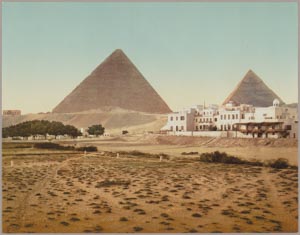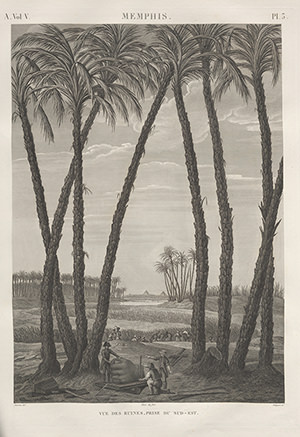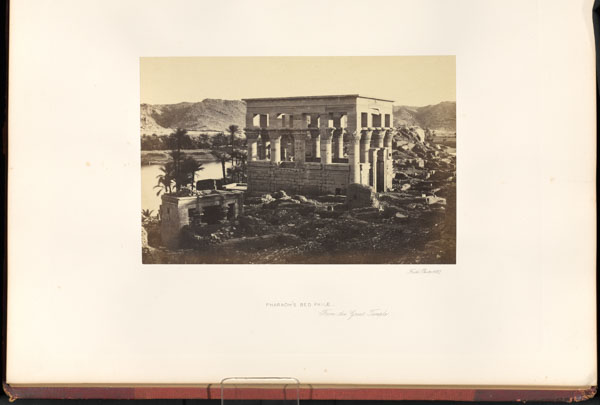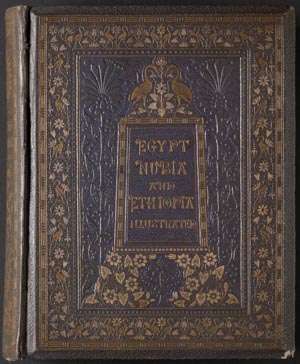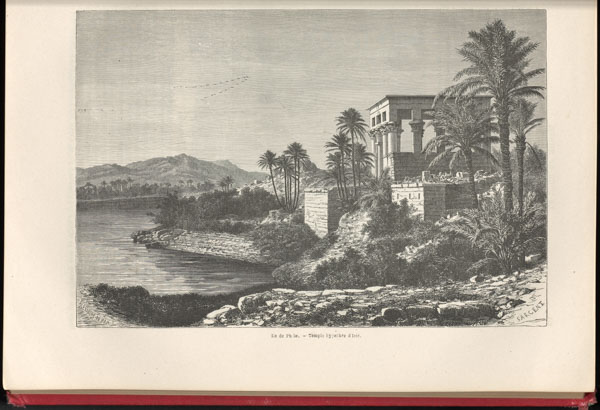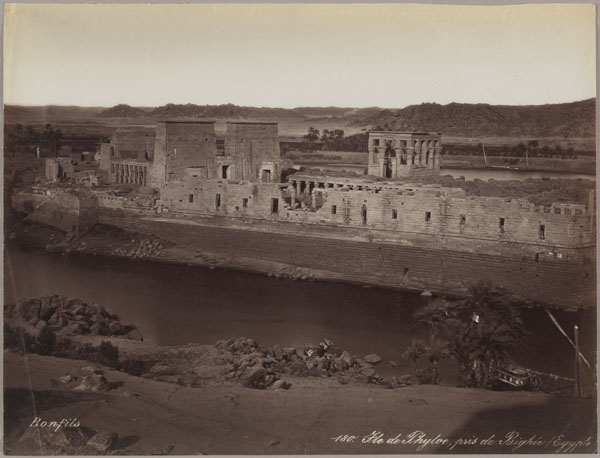Egypt
In 1798, Napoléon Bonaparte, then 29 years old, led 36,000 armed forces and 500 civilians into Egypt on a colonialist campaign. The violent and destructive occupation that followed lasted three years, until Ottoman-supported British forces defeated the French and forced their evacuation.
Within days of landing, 156 civilian engineers, scientists, and artists formed the Commission des sciences et arts d’Égypte. Their job was to compile information about all aspects of Egypt—geography, people, agriculture, industry—that would be useful to the occupation and help to determine its future prospects. This massive surveying mission resulted in Description de l’Égypte, a state-sponsored publication consisting of 23 volumes published over twenty years. The monumental project exemplifies the compulsion to record, classify, and possess that took hold in the West in the nineteenth century, and the critical role of images in those endeavors. More than half of the volumes consist only of pictures, with 3,000 drawings published in all. Some, like the one exhibited here, show members of the Commission at work, in top hats and frock coats.
The publication catalyzed Egyptology as a field and Egyptomania as a popular fad, and introduced the Orientalist tropes that would define how the East was represented for the West in art, popular imagery, and literature through the rest of the century, and beyond.
“Oh what pictures we would make, if we could command our points of view!”
Thus laments Francis Frith in the introduction to his Egypt and Palestine Photographed and Described, a highly ambitious work devoted to what Frith calls “the two most interesting lands of the globe.” Frith had travelled to Palestine, Syria, and Egypt in 1857, hoping to make pictures that would appeal to a Victorian audience in the throes of Egyptomania and equally eager for representations of biblical territories. Working with the finicky and sticky wet collodion process in a dusty, extremely hot environment—he wrote of his collodion literally boiling, and the “smothering little tent” in which he sensitized and developed his glass-plate negatives—Frith managed to create technically brilliant views that helped lay the foundations for one of nineteenth-century photography’s most successful careers. As Frith wrote, he could not provide the drama and compositional perfection of pictures that artists imagined into being; he strove instead for “simple truthfulness.”
Frith was preceded and followed to the Middle East by legions of photographers. From the 1840s, the region constituted a testing ground for European practitioners, whose explorations of the descriptive, aesthetic, and economic possibilities of photography drew from and fueled the Orientalist rhetoric already operating in other discursive forms. Ottoman photographers participated as well, setting up studios in metropolitan centers and supplying tourists with pleasing photographic views that they were not yet able to make themselves. (The tourists included Daniel Willard Fiske, Cornell’s first university librarian, from whose archive two of the exhibited photographs are drawn.)
